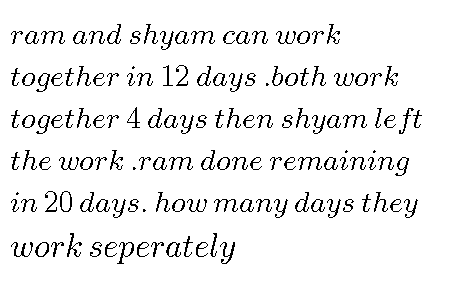
AllQuestion and Answers: Page 1707
Question Number 37730 Answers: 1 Comments: 1
$$\:{Differentiate}\: \\ $$$${x}\left(\mathrm{1}+{x}\right)^{\mathrm{4}} \: \\ $$$$ \\ $$
Question Number 37728 Answers: 1 Comments: 0
Question Number 37712 Answers: 1 Comments: 1
$${Evaluate}\:\underset{{r}=\mathrm{0}} {\overset{\infty} {\sum}}\mathrm{2}^{{r}−\mathrm{1}} \\ $$
Question Number 37711 Answers: 1 Comments: 0
Question Number 37692 Answers: 2 Comments: 0
Question Number 37691 Answers: 0 Comments: 2
Question Number 37664 Answers: 1 Comments: 0
$$\mathrm{find}\:\int\left(\mathrm{1}\:+\:{sinx}\right){dx} \\ $$
Question Number 37663 Answers: 3 Comments: 0
Question Number 37662 Answers: 1 Comments: 0
Question Number 37661 Answers: 1 Comments: 0
Question Number 37658 Answers: 0 Comments: 0

Question Number 37652 Answers: 0 Comments: 0
Question Number 37649 Answers: 1 Comments: 0

Question Number 37648 Answers: 1 Comments: 0
Question Number 37645 Answers: 1 Comments: 0

Question Number 37642 Answers: 1 Comments: 0
Question Number 37636 Answers: 1 Comments: 1
Question Number 37635 Answers: 0 Comments: 1
Question Number 37634 Answers: 1 Comments: 1
Question Number 37633 Answers: 1 Comments: 0
$${find}\:\:\int_{\mathrm{0}} ^{+\infty} \left[\:\:{x}\:{e}^{−{x}} \right]{dx} \\ $$
Question Number 37632 Answers: 1 Comments: 1

Question Number 37627 Answers: 3 Comments: 0
Question Number 37602 Answers: 0 Comments: 4
Question Number 37601 Answers: 0 Comments: 2
Question Number 37600 Answers: 2 Comments: 0
Question Number 37591 Answers: 1 Comments: 0
Pg 1702 Pg 1703 Pg 1704 Pg 1705 Pg 1706 Pg 1707 Pg 1708 Pg 1709 Pg 1710 Pg 1711
